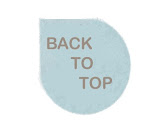 A trip to Iceland may conjure up images of active volcanoes and Vikings, but these days it’s more realistic to spot sustainable fishermen working with low impact gear. Our stores in Northern California as well as in the Northeast area are currently carrying fresh long line Atlantic Cod from Iceland, and the customer reaction has been great. Cod is a fish known to change worlds and impact cultures for hundreds of years, and it’s certainly no stranger to controversy.
A trip to Iceland may conjure up images of active volcanoes and Vikings, but these days it’s more realistic to spot sustainable fishermen working with low impact gear. Our stores in Northern California as well as in the Northeast area are currently carrying fresh long line Atlantic Cod from Iceland, and the customer reaction has been great. Cod is a fish known to change worlds and impact cultures for hundreds of years, and it’s certainly no stranger to controversy.
As the global seafood coordinator for Whole Foods Market I’ve seen my share of unique and impressive fisheries; visiting Sudureyri in the far northwestern corner of Iceland ranks with the best of them. I headed there last month with a small group from Whole Foods Market to see the fishery first hand. The initial impression of Sudureyri brings to mind one word – remote. This small fishing village of less than four hundred people is only an hour plane ride from Reykavik but a world away from standard industry. To reach the village you have to travel miles through the mountains in a dark tunnel, emerging out onto a beautiful landscape of peaks and valley with the ocean spread out on all sides. The town features an inn, your classic pub or two, and a few dozen modest homes. The industry here consists of long line cod fishing, with a nod to passionate sport fishermen from Europe who often visit in the summer to catch hook and line cod — sometimes weighing over 40 pounds!
 This community has seen it’s share of overfishing. In the 1970’s Sudureyri was home to a few large scale trawlers. They worked the waters hard until the cod were just about fished out. Strong regulations were then put in place to prevent complete collapse of the fishery. The local fishermen took note and changed the gear used to fish for cod. These days the commercial fishermen use day boats and long lines. Long lines are comprised of hundreds of hooks that cause little to no damage to the ocean floor.
This community has seen it’s share of overfishing. In the 1970’s Sudureyri was home to a few large scale trawlers. They worked the waters hard until the cod were just about fished out. Strong regulations were then put in place to prevent complete collapse of the fishery. The local fishermen took note and changed the gear used to fish for cod. These days the commercial fishermen use day boats and long lines. Long lines are comprised of hundreds of hooks that cause little to no damage to the ocean floor.
To really gain an understanding about the mechanics involved, our group tagged along on a commercial boat to watch the fishermen in action. For this trip, we only went out a few miles, but often they head out for an hour or two before dropping the lines. The lines are let out from the stern of the vessel — a 35-foot two-man boat built specifically to catch cod. The lines are marked with a buoy, and the boat returns quickly that same day to pull the lines and assess the catch. On this day we watched as hundreds of pounds of cod were pulled up just 30 minutes after setting the line.
The cod are all individually caught, no net or other gear is necessary. They come on board to be de-hooked and iced by the two-man crew. The boat returns to shore just hours after catch and the fish are processed right in town. From there, it’s a non-stop journey to our stores.
 This type of long line gear allows for minimum by-catch and smaller, non-targeted species can be sent back to the water when necessary. Watching the simple gear in action was a tribute to the fact that technology is not always the answer to sustainable fishing; in fact, this long line method has been used for hundreds of years across the globe.
This type of long line gear allows for minimum by-catch and smaller, non-targeted species can be sent back to the water when necessary. Watching the simple gear in action was a tribute to the fact that technology is not always the answer to sustainable fishing; in fact, this long line method has been used for hundreds of years across the globe.
Atlantic Cod from Iceland caught with long lines is ranked yellow by both the Blue Ocean Institute and Monterey Bay Aquarium. This catch method is less harmful to the environment, and while management is in place, the yellow ranking indicates there’s still room for long-term improvement.
I think it’s nice to know that communities like this still exist and you can support them by looking for long line Atlantic Cod from Iceland – currently in our stores in Northern California and in our Northeast region stores, and making its way to more stores as I write this.


No comments:
Post a Comment